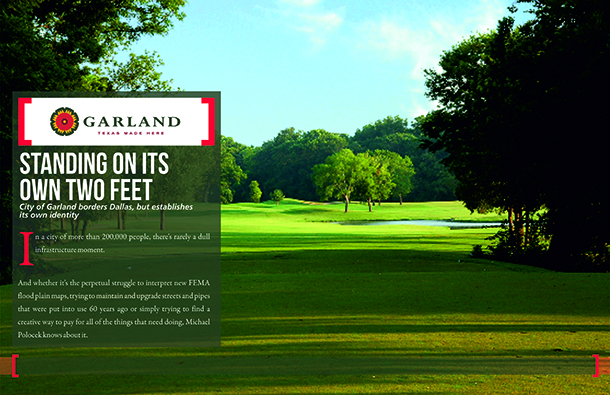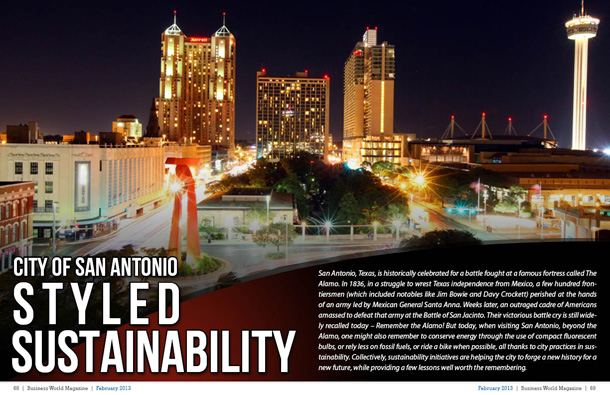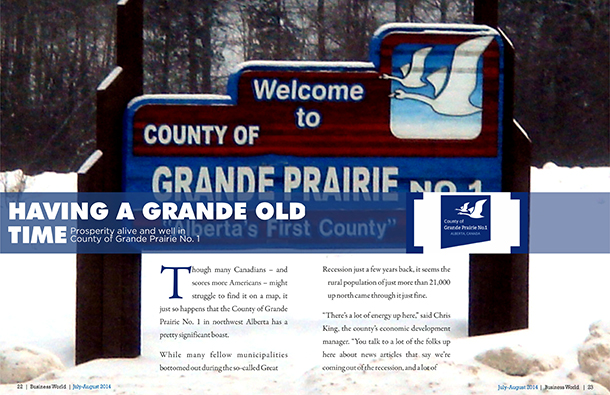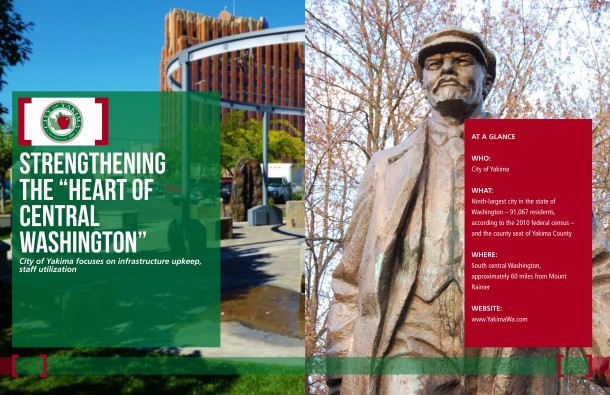
Standing on its Own Two Feet
City of Garland borders Dallas, but establishes its own identity
Â

In a city of more than 200,000 people, there’s rarely a dull infrastructure moment.
And whether it’s the perpetual struggle to interpret new FEMA flood plain maps, trying to maintain and upgrade streets and pipes that were put into use 60 years ago or simply trying to find a creative way to pay for all of the things that need doing, Michael Polocek knows about it.
As director of engineering for the city of Garland, Texas – sandwiched in between Richardson and Mesquite as part of the sprawling Dallas-Fort Worth Metroplex – Polocek oversees a department whose tasks include design and construction of major infrastructure initiatives, formulation of standard practices for public works improvement, review of proposed development plans, maintenance of city records for public works construction and administration of approved policies.
It’s also the conduit for review/inspection of public works projects and the city’s right of way, while managing both the National Flood Insurance Program and local flood damage prevention efforts.
Every once in a while, though, Polocek does manage to sit down and assess where it all stands.
“Things are on the upswing, which tends to cause problems with infrastructure, but it’s not a terrible problem to have. For the most part, our infrastructure is fairly efficient,†he said. “Some of our most difficult-to-develop areas have begun to draw some interest, too, so it’ll keep us all busy for the next several years.â€
Indeed, Polocek said, the clamor for development of single- and multi-family residential units and accompanying retail parcels has finally spread to the final 10 percent of available territory in a city that’s already been built out to about 90 percent of capacity over the last few generations.
Population stood at a mere 2,223 at federal census time in 1940, but three straight decades of triple-digit growth brought it to 81,437 by 1970 – and the 100,000 threshold was easily crossed by 1980, when the count came in at 138,857. A 30.1-percent skip by 1990 and another 19.4-percent spike through 2000 rocketed the total as high as 215,768, before things finally settled down to just a moderate 5.1-percent rise through 2010’s count of 226,876.
The estimated population to start of 2014 was 233,206, making Garland the 12th most-populous city in Texas and 87th most-populous in the nation. In keeping with a city of that size, Polocek’s department includes eight licensed engineers among a full-time workforce of 30.
And thanks to both the population and the number of significant employers in the city – along with the fact that Garland is actually responsible for providing some services to other municipalities – he eschewed classifying Garland as just another Dallas suburb.
“We border Dallas on our southern edge, so yes, Garland is technically a suburb area of Dallas,†he said. “But with almost 240,000 people, that’s a pretty big suburb. We have our own electric company, we have our own water and waste water treatment. And we treat waste water for (the nearby cities of) Rowlett, Sachse Mesquite Sunnyvale and Richardson.
“People depend on Garland for a lot, and Garland itself is really pretty self-sufficient.â€
Alongside self-sufficient, you can go ahead and check the box for ever-changing, too.
Among the projects in the ongoing column is a $7.8 million improvement that’ll transform Pleasant Valley Road from a two-lane asphalt layout with drainage ditches on either side to a divided four-lane concrete thoroughfare with left-turn lanes, underground drainage, hike/bike trails and sidewalks.
The road, which is slated for completion by the end of 2014 or early in 2015 will ultimately transition into a 1,500-foot bridge – with a $26 million price tag, 80 percent of which will be covered by regional highway toll revenues – that’ll cross Rowlett Creek into the neighboring city of Sachse.
Project bidding is imminent and site work for the bridge is tentatively scheduled to begin next spring, after the relocation of various electric and telecommunications lines.
Another bridge crossing Rowlett Creek, this one on Miller Road, is being reconstructed in partnership with Dallas County. Most of the $10.2 million bridge actually lies within the Dallas city limits, and the arrangement going forward is that the project will be funded in tandem by the county (10 percent), the cities of Garland and Rowlett (5 percent each) and regional toll revenue (80 percent), but upon completion will be owned and maintained by the city of Dallas.
An estimated two-year construction process began in March.
“It crosses three cities, and the only way to get it constructed was Dallas County went to bat for some funding and they received it,†Polocek said. “It’s an old bridge that was probably built back in the ’40s or ’50s. Steel structures, and every time it rains anything over a two-year event the bridge is completely flooded and they have to close the road off. It’s a major thoroughfare between Rowlett and Garland, with numerous, numerous vehicles going over it every day.â€
Yet another $10 million will go to pay for the upgrade of a stretch of Shiloh Road between Interstate 635 and Kingsley Road from a four-lane to a six-lane divided layout, with simultaneous work on storm drainage capabilities and relocation of myriad utility equipment.
The road is a major thoroughfare between Garland and Dallas and an arterial that serves the largest industrial district in Garland and is home to a significant amount of truck traffic. Construction will commence in the first or second quarter of 2015, pending the utilities movements.
Some of Garland’s road projects going forward will be viewed from a sustainable/green-tinted perspective, according to Donna Manhart, a senior engineer on Polocek’s departmental team.
“We’ve been kind of learning from some pilot programs that have been constructed around the area,†she said. “With a city that’s already developed like Garland, and when you’re pinned for right-of-way space, not every road it suited for green development. But we do have a few opportunities for future roadways that we’re waiting on funding for and we’re going to look into for sustainable design.â€
And at some point in the future, Polocek and Co. just might have time for a cup of coffee, too.
Additional development has begun to spring up around the Firewheel Town Center retail complex on the city’s north end, near the President George Bush Turnpike, and Polocek said that is most likely the aforementioned final frontier for add-ons within an already jam-packed city blueprint.
“We’ve had a number of apartments go in up there and we’ve seen a number of developments,†he said. “If they do some rezoning, we’ll definitely have to look at our infrastructure a little more closely in certain areas. There’s always something to do.â€
AT A GLANCE
WHO: City of Garland
WHAT: The 12th-largest city in Texas and 87th-largest in the country – as of the 2010 federal census – that now is home to an estimated 233,206 residents
WHERE: Part of the Dallas/Fort Worth Metroplex, bordered by the cities of Dallas, Mesquite, Plano and Richardson in the state’s east central region
WEBSITE: www.ci.Garland.Tx.us








